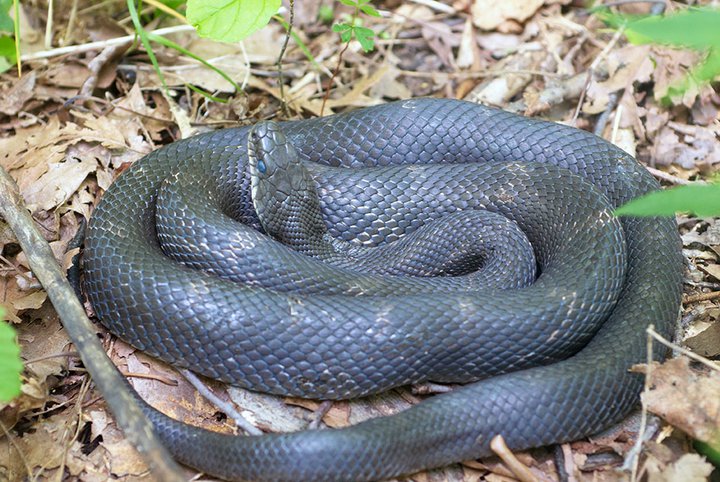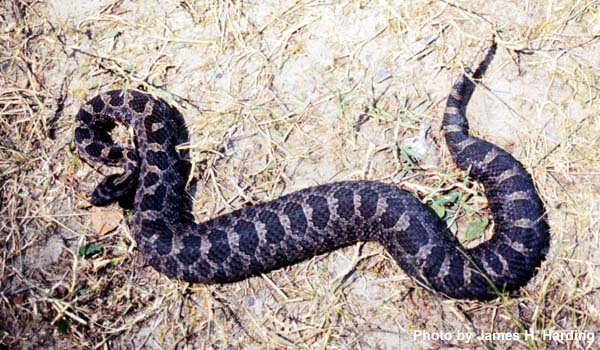DNR Offers Tips on Michigan Snake Safety
Editor’s Note: These general safety precautions issued by the DNR are especially timely after Thursday's news that a child was hospitalized after after being bitten by an eastern massasauga rattlesnake at U of M’s Matthaei Botanical Gardens in Ann Arbor. Click HERE to more about that incident.
This time of year, as snakes are out and about in the great outdoors, the Department of Natural Resources gets many questions about Michigan's snakes. Michigan is home to 17 different species, 16 of which are completely harmless to humans.
There are two snakes whose similarity often causes a stir among people who encounter them.
Eastern hog-nosed snakes, when threatened, puff up with air, flatten their necks, and bodies and hiss loudly. (This has led to local names like "puff adder" or "hissing viper.") If unsuccessful, the snakes will writhe about, excrete a foul-smelling musk, and then turn over with mouth agape and lie still, as though dead. Despite this intimidating behavior, hog-nosed snakes are harmless to humans.
The eastern massasauga rattlesnake, by contrast, is the only venomous snake species found in Michigan. It has a segmented rattle on its tail that differentiates it from the harmless species that lack segmented rattles. It will also buzz its tail if approached or handled. Habitat loss has resulted in declining populations, so this rare species is protected.
Eastern massasauga rattlesnakes are shy creatures and avoid humans whenever possible. Also known as “swamp rattlers,” they spend the vast majority of their time in year-round wetlands hunting their primary prey, mice. When encountered, if a snake doesn't feel threatened, it will let people pass without revealing its location. If humans do get too close, a rattlesnake will generally warn of its presence by rattling its tail while still several feet away. If given room, the snake will slither away into nearby brush. Rattlesnake bites, while extremely rare in Michigan (fewer than one per year), can and do occur. Anyone who is bitten should seek medical attention immediately. To learn more about the massasauga and for more snake safety tips, click HERE.
Those who encounter a snake of any kind should leave it alone and should not try to handle or harass the snake – this is primarily how snake bites happen. A snake can only strike roughly one-third of its body length, so it is physically impossible for people to get bitten if they stay more than 24 inches away from the snake’s head. Michigan snakes do not attack, chase or lunge at people, or seek out human contact. Simply put, if left alone, Michigan snakes will leave people alone.
To learn more about Michigan's snakes and other reptiles as well as amphibians, click HERE.












You must be logged in to post a comment Login